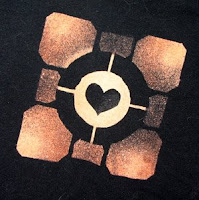 I love my Vibram FiveFingers Surge model shoes (read about them here and here) and ever since last autumn I have wanted to get a lighter pair of FF's for warmer weather, especially since the heat generated by my foot muscles (insulated by the Surge's neoprene) can make my feet pretty sweaty. This spring they actually did away with the old Surge model and added two new models, one of which replaced my previous desire for a pair of Sprints: the new KSO model (short for "Keep Stuff Out"), which is a lot like the Sprint except the whole foot is covered in order to, well, keep stuff out.
I love my Vibram FiveFingers Surge model shoes (read about them here and here) and ever since last autumn I have wanted to get a lighter pair of FF's for warmer weather, especially since the heat generated by my foot muscles (insulated by the Surge's neoprene) can make my feet pretty sweaty. This spring they actually did away with the old Surge model and added two new models, one of which replaced my previous desire for a pair of Sprints: the new KSO model (short for "Keep Stuff Out"), which is a lot like the Sprint except the whole foot is covered in order to, well, keep stuff out.Unfortunately, the KSOs have proven to be so popular as to make them difficult to obtain so it was back to the Sprints. I decided this was fine since the Sprints come in more jovial colors anyhow. Maybe by the time I have money to get another pair of FFs next summer, new KSOs will be out in more vibrant color schemes. ;)
I ordered a pair of red Sprints. Now, let me tell you, the 'red' on the vibram site looks rather orange but in reality the shoes are cherry-hotrod RED. I was bummed about this, particularly since I tend to avoid wearing red but in the end said to heck with it and kept them. (Too much of a hassle to return things through the mail from Alaska). I also ordered a pair of Injini toe socks from the Vibrams site to help insulate my foot and keep grit out.
Fitting
Whoa, this was a big surprise. Before I ever got a pair of FFs I recall reading about how all these people had all these problems getting their toes in the slots but I never have any such problems with my Surges. Of course, the Surge model was made of thicker stuff - these thinner Sprints are TOUGH to get your toes into! And my toes were prepared! Not a big deal - the time it takes to sort out my toes is time that would of been taken by tying the laces on my running shoes. The heel is much more spacious than on the Surge - and I don't need the extra room (who has heels this bulbous?) and some of the material in the inside back of the heel rubs a bit. I read about this; I may have to tape them (wearing the Injini socks takes care of this as well). Otherwise, the fit is great, the straps are well placed and I can't see the main top strap ever chafing.
Comparison to the Surge
I am blown away by the difference between these and the Surge model. The Sprints are SO much thinner than the Surges - and I already thought the Surges were thin and tactile. Gravel hurt more than 'usual' with these; textures and edges were even easier to feel and to grip than in the Surges. Enhanced gripping was particularly notable while walking the rails of a train track. There is much more flex for individual toes, too. The material itself is a great change; my feet actually breathe! Worn with the Injini socks, my feet still overheated on this, a cool day in the 50's, but they did not get clammy with sweat like in the Surges.
I haven't worn these in water yet or done any serious hiking but I look forward to putting them through the paces and temperature tests. Overall I am happy about the lighter, thinner, more flexible nature of these shoes, though there are some rough edges here and there that aren't existing in the Surges (the Surges envelop the foot like a perfect glove). Don't get me wrong - I still love my Surges but they simply either need to be worn in water or in cooler weather.
I see with the Sprints that FiveFingers are not for everyone. The KSOs may have taken out some of the rough edges, looking more shoe-like for one, and perhaps being a tad more comfortable. However, if you are at all interested, I highly recommend looking into trying out a pair of any model.





